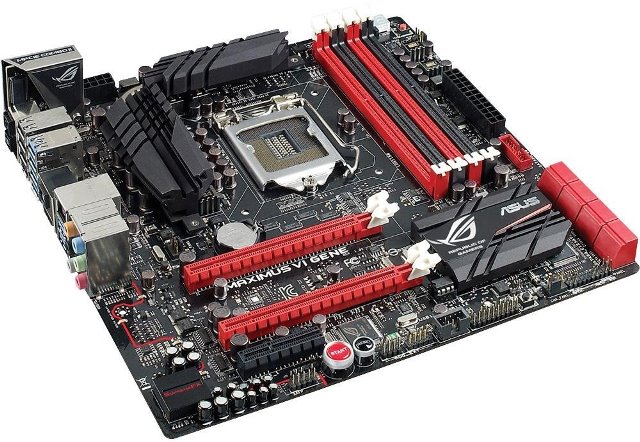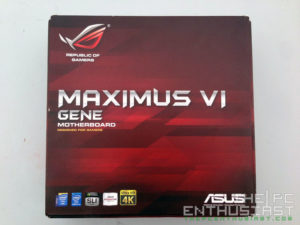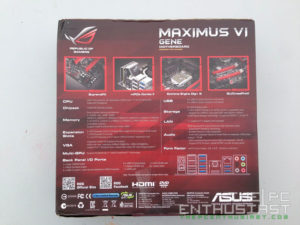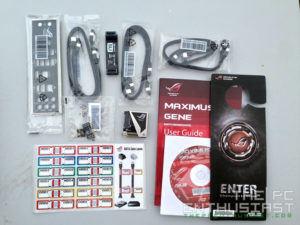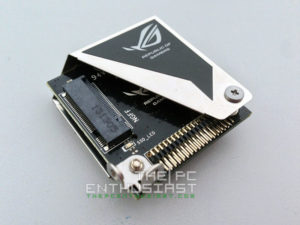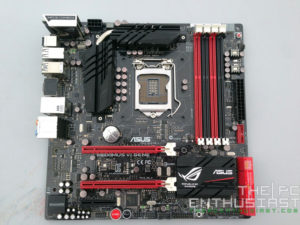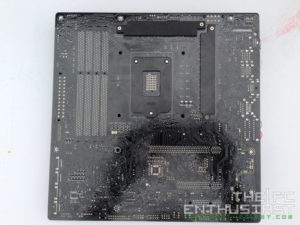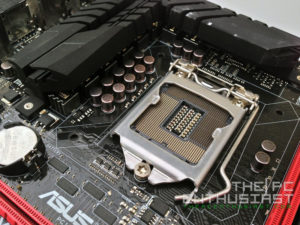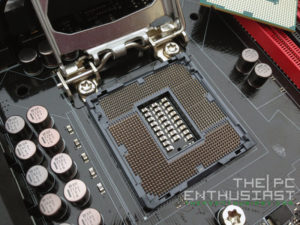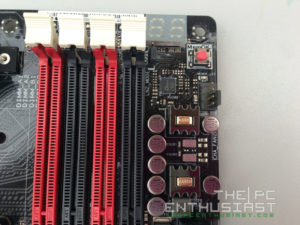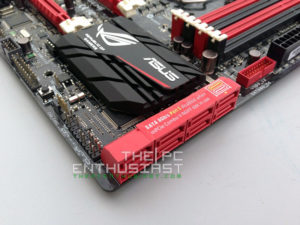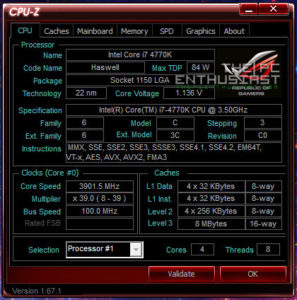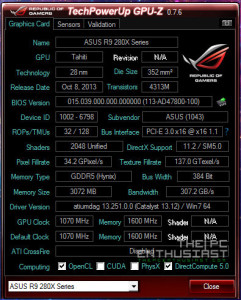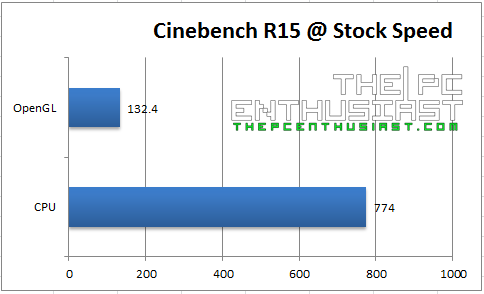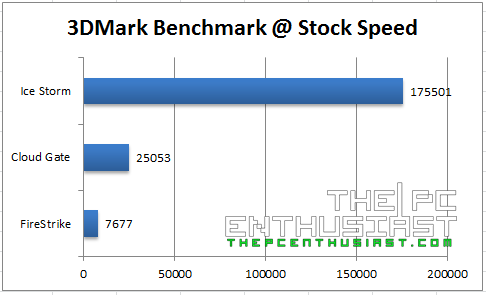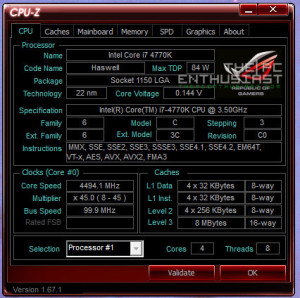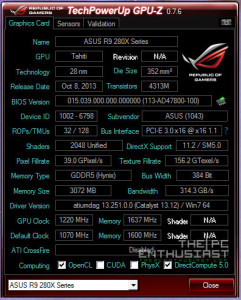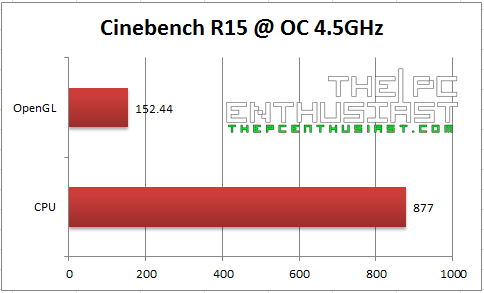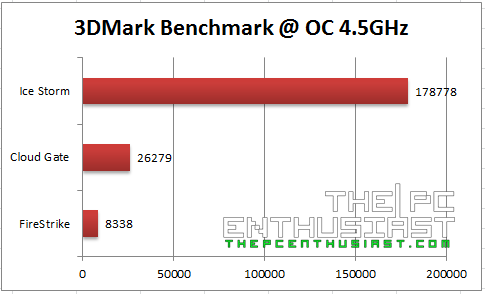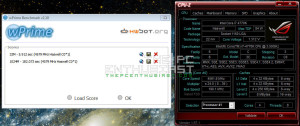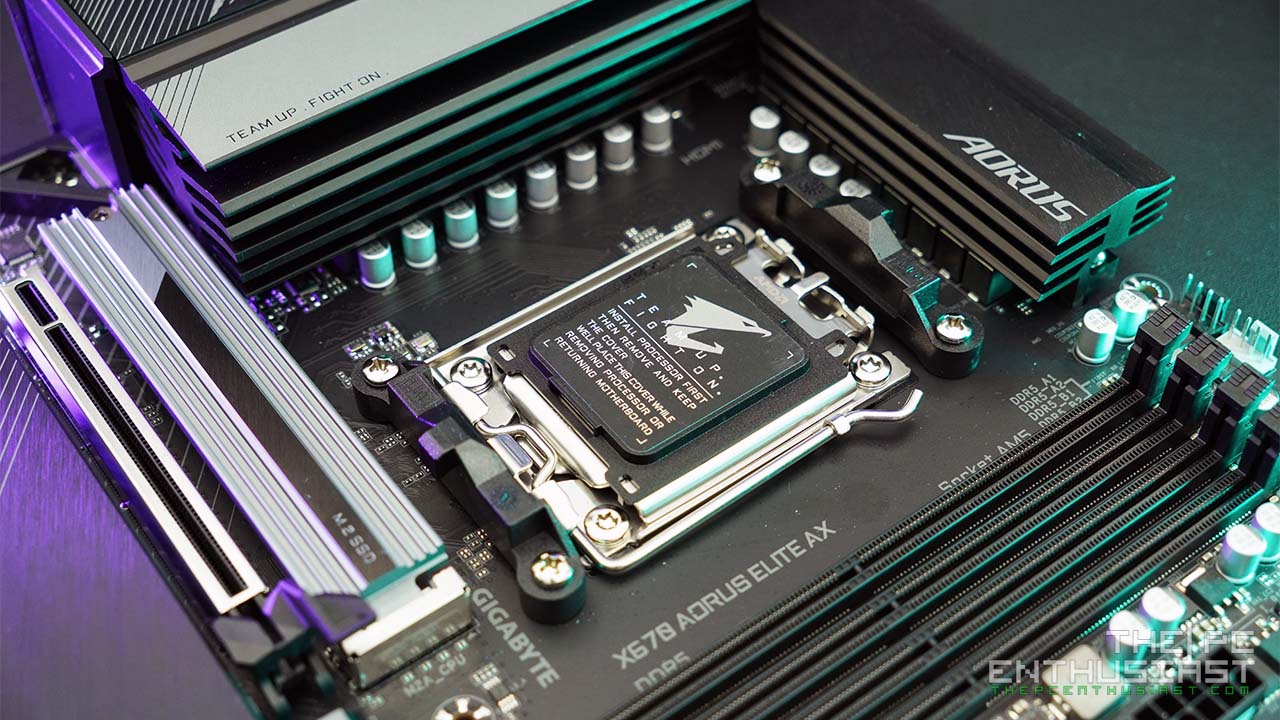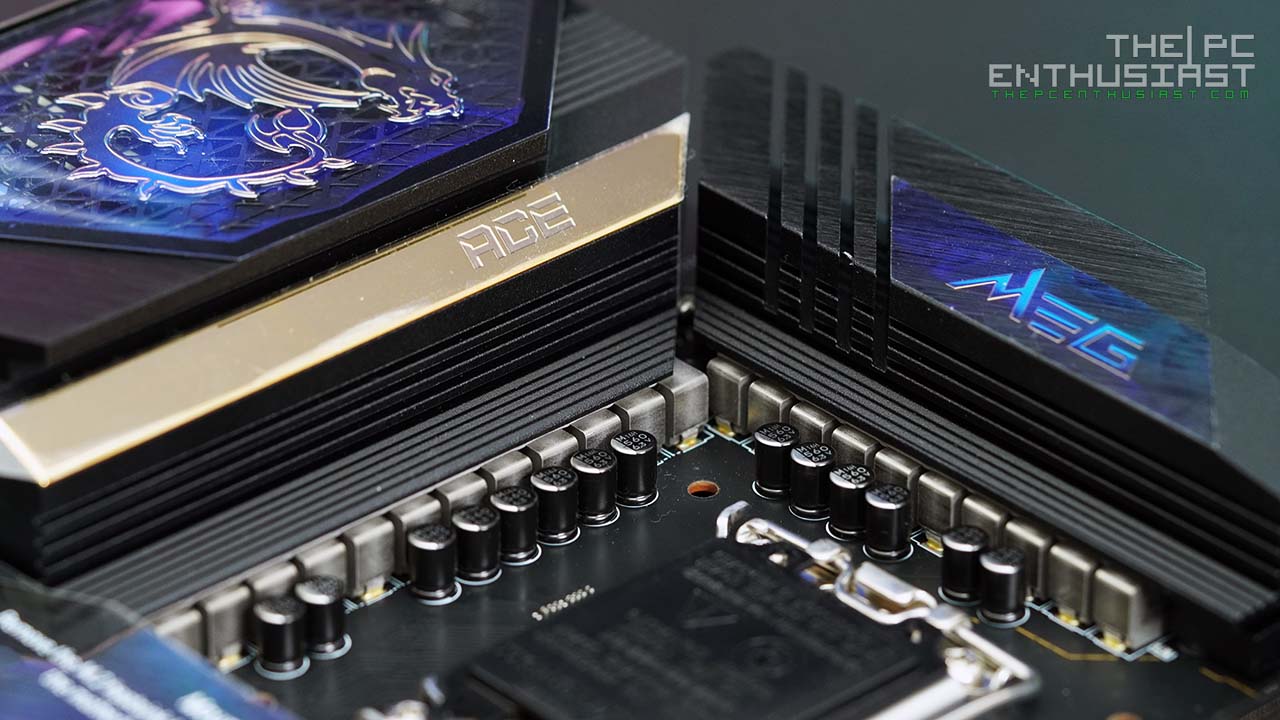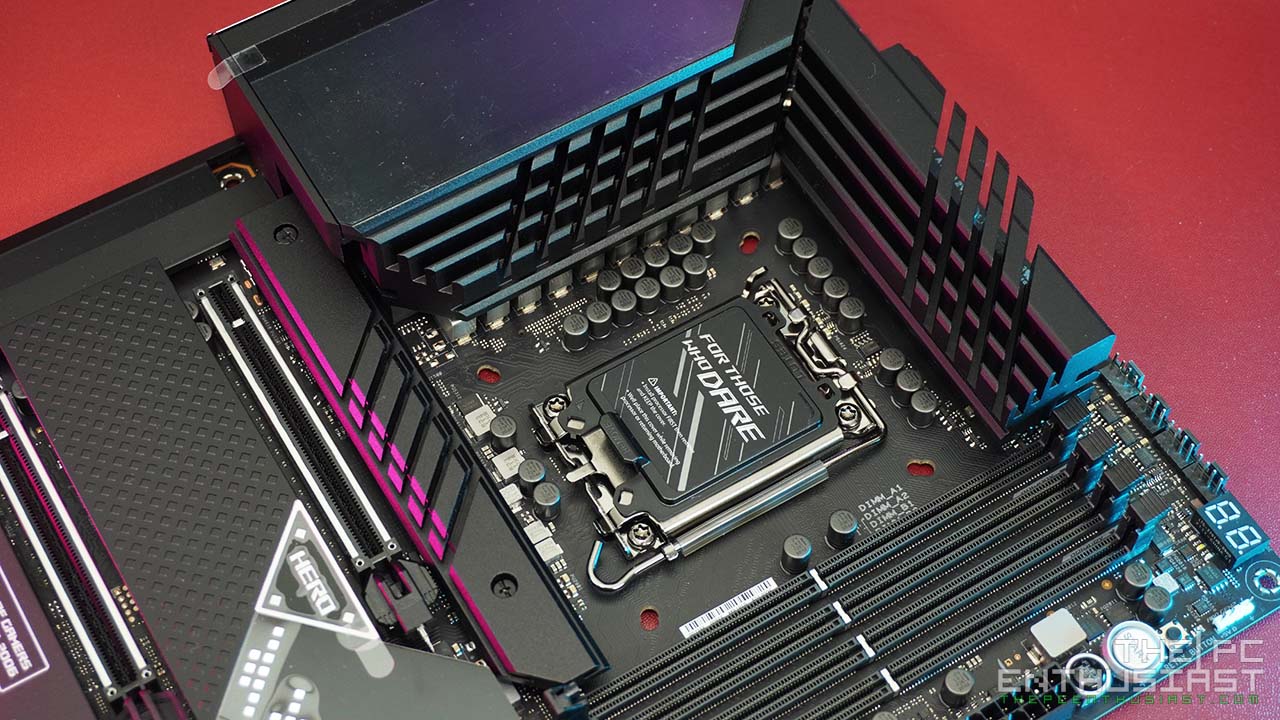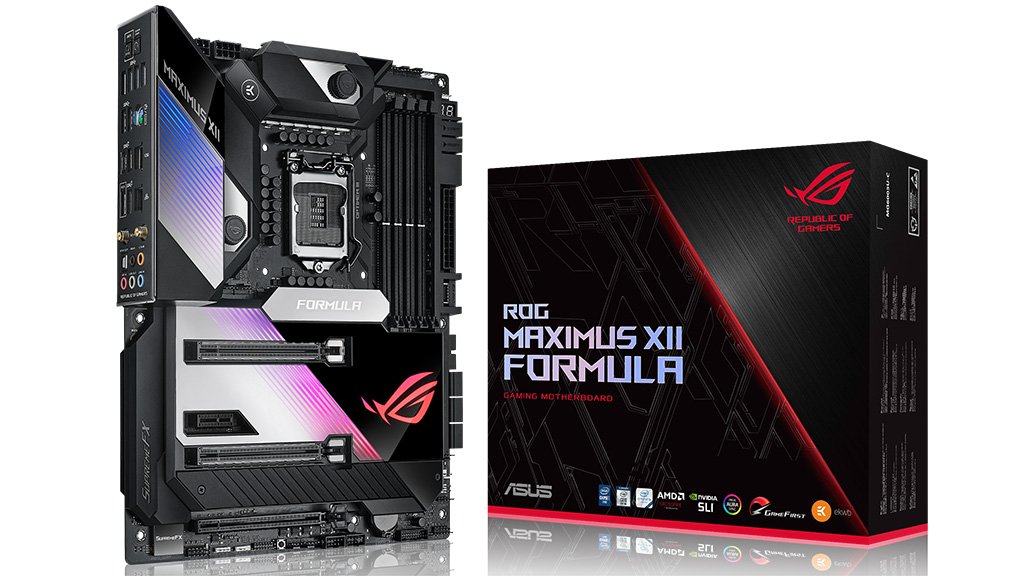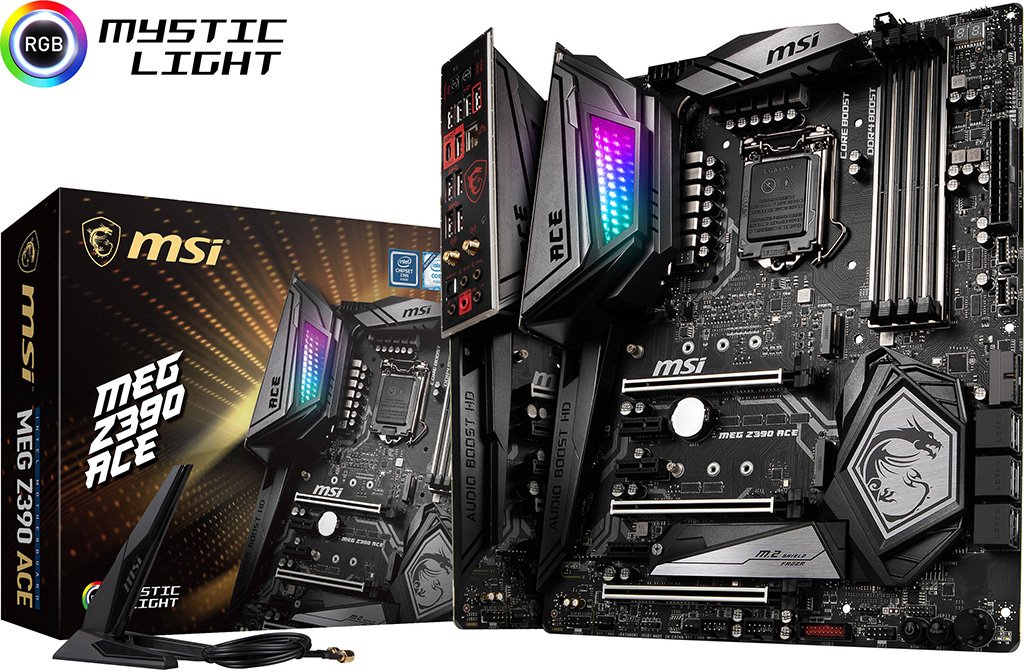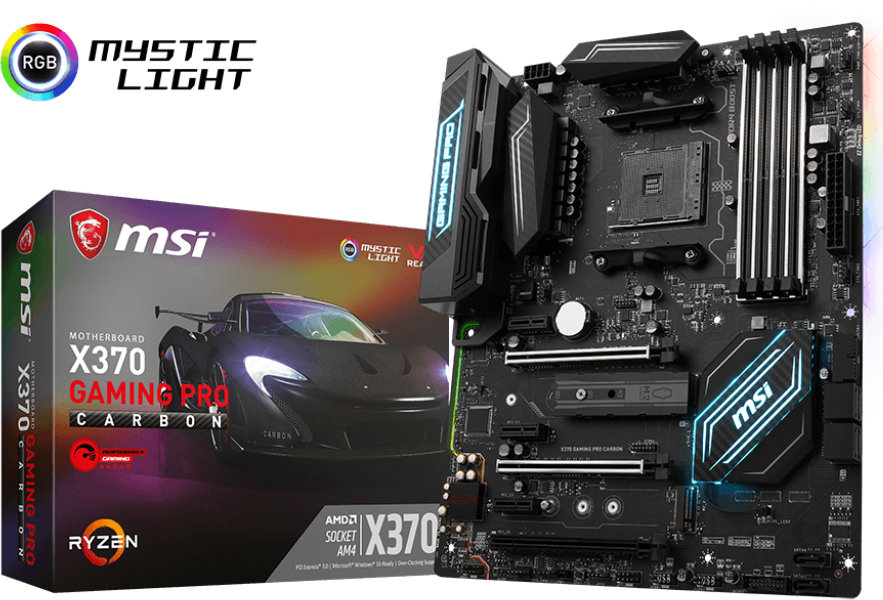Today, let’s take a look at the Asus Maximus VI Gene, a micro ATX motherboard and the current Asus ROG Maximus Gene featuring Intel’s Z87 Express Chipset. Asus ROG Gene has become popular ever since the first Gene was released, and until today its legacy continues, offering feature rich and powerful performance in a small form factor packaging. Please continue reading my Asus Maximus VI Gene review below and find out if this motherboard would be your next upgrade.
Asus Maximus VI Gene Review
The Asus Maximus VI Gene is like a micro-ATX version of the Maximus VI Formula or the Hero. It features the current Intel Z87 Express Chipset with socket LGA 1150, designed to handle the 4th generation Intel Haswell processors. Despite its size, the Maximus VI Gene is fully loaded with features that most gamers are looking for in a motherboard.
In a gist, the Maximus VI Gene features Extreme Engine Digi+ III to help PC enthusiasts and gamers overclock the processor, and reach high and stable clock speeds easily. It also has an mPCIe Combo II where you can install an M.2 NGFF SSD and a WLAN card. It has GameFirst II technology which prioritizes gaming connections, and Supreme FX audio processor to deliver loud, clear and crisp sound. Its two PCEe 3.0 slots support both SLI and CrossFireX.
It has eight SATA 6Gbps ports and the four DIMM dual channel memory slots that are capable of reaching 3000+MHz memory clock speeds. It also supports RAMDISK technology to speed things up. Basically this is one robust mATX motherboard loaded with overclocking and gaming features, as expected from a ROG motherboard. Let’s check out more details from the specifications table and at the closer look of the motherboard below.
Asus Maximus VI Gene Specifications
| CPU | Intel® Socket 1150 for 4th Generation Core™ i7/Core™ i5/Core™ i3/Pentium®/Celeron® Processors Supports Intel® 22 nm CPU Supports Intel® Turbo Boost Technology 2.0 |
| Chipset | Intel® Z87 |
| Memory | 4 x DIMM, Max. 32GB, DDR3 3000(O.C.)/2933(O.C.)/ 2800(O.C.)/2666(O.C.)/ 2600(O.C.)/2500(O.C.)/ 2400(O.C.)/2200(O.C.)/ 2133(O.C.)/2000(O.C.)/ 1866(O.C.)/1800(O.C.)/ 1600/1333 MHz Non-ECC, Un-buffered Memory Dual Channel Memory Architecture Supports Intel® Extreme Memory Profile (XMP) |
| Graphic | Integrated Graphics Processor - Supports HDMI with max. resolution 4096 x 2160 @ 24 Hz / 2560 x 1600 @ 60 Hz Supports Intel® InTru™ 3D, Quick Sync Video, Clear Video HD Technology, Insider™ |
| Multi-GPU Support | Supports NVIDIA® Quad-GPU SLI™ Technology Supports AMD Quad-GPU CrossFireX™ Technology |
| Expansion Slots | 2 x PCIe 3.0/2.0 x16 (x16 or dual x8) 1 x PCIe 2.0 x4 1 x mini-PCIe 2.0 x1 |
| Storage | Intel® Z87 chipset : 6 x SATA 6Gb/s port(s), red Support Raid 0, 1, 5, 10 Intel® Z87 chipset : 1 x M.2 (NGFF) Socket 2 on mPCIe Combo II expansion card(s), black Support M.2 (NGFF) Type 2242 SSD card (22mm x 42mm), Support PCI express 2.0 x1 and SATA 6Gb/s standards ASMedia® ASM1061 controller : 2 x SATA 6Gb/s port(s), red |
| LAN | Intel® I217V, 1 x Gigabit LAN Controller(s) |
| Audio | ROG SupremeFX 8-Channel High Definition Audio CODEC - Supports : Jack-detection, Multi-streaming, Front Panel Jack-retasking - High quality 115 dB SNR stereo playback output (Line-out at rear) and 104 dB SNR recording input (Line-in) Audio Feature : - SupremeFX Shielding™ Technology - ELNA premium audio capacitors - Blu-ray audio layer Content Protection - Sonic Radar - DTS Connect - Optical S/PDIF out port(s) at back panel |
| USB Ports | Intel® Z87 chipset : 4 x USB 3.0 port(s) (2 at back panel, blue, 2 at mid-board) Intel® Z87 chipset : 8 x USB 2.0 port(s) (4 at back panel, black, 4 at mid-board) ASMedia® USB 3.0 controller : 4 x USB 3.0 port(s) (4 at back panel, blue) |
| ROG Exclusive Features | mPCIe Combo II (mPCIe/M.2 combo card) Extreme Engine Digi+ III : - 8 + 2 phase power design - NexFET™ Power Block MOSFET - 60A BlackWing Chokes - 10K Black Metallic Capacitors ProbeIt UEFI BIOS features : - ROG BIOS Print - GPU.DIMM Post - Tweakers' Paradise - ROG SSD Secure Erase ROG RAMDisk GameFirst II Extreme Tweaker |
| Special Features | ASUS Dual Intelligent Processors 4 with 4-Way Optimization : - The tuning key perfectly consolidates ASUS-exclusive DIGI+ Power Control, TPU, EPU, and Fan Xpert 2 optimize the digital power setting, system performance, power saving and whole system cooling configuration CPU Level Up ASUS Exclusive Features : - USB BIOS Flashback - MemOK! - AI Suite 3 - Ai Charger+ - USB Charger+ - USB 3.0 Boost - Disk Unlocker ASUS EZ DIY : - ASUS O.C. Profile - ASUS CrashFree BIOS 3 - ASUS EZ Flash 2 ASUS Q-Design : - ASUS Q-Shield - ASUS Q-Code - ASUS Q-LED (CPU, DRAM, VGA, Boot Device LED) - ASUS Q-Slot - ASUS Q-DIMM - ASUS Q-Connector Overclocking Protection : - ASUS C.P.R.(CPU Parameter Recall) |
| Operating System Support | Windows® 8.1 Windows® 8 Windows® 7 |
| Back I/O Ports | 1 x HDMI 1 x LAN (RJ45) port(s) 6 x USB 3.0 (blue) 4 x USB 2.0 1 x Optical S/PDIF out 6 x Audio jack(s) 1 x Clear CMOS button(s) 1 x ROG Connect On/ Off switch(es) |
| Internal I/O Ports | 1 x USB 3.0 connector(s) support(s) additional 2 USB 3.0 port(s) 2 x USB 2.0 connector(s) support(s) additional 4 USB 2.0 port(s) 1 x TPM connector(s) 8 x SATA 6Gb/s connector(s) 1 x CPU Fan connector(s) 1 x CPU OPT Fan connector(s) 3 x Chassis Fan connector(s) 1 x S/PDIF out header(s) 1 x 8-pin EATX 12 V Power connector 1 x 24-pin EATX Power connector(s) 1 x Front panel audio connector(s) (AAFP) 1 x System panel(s) 1 x DirectKey Button(s) 1 x DRCT header(s) 1 x MemOK! button(s) 10 x ProbeIt Measurement Points 1 x LN2 Mode header(s) 1 x Power-on button(s) 1 x Reset button(s) 1 x ROG extension (ROG_EXT) header(s) 1 x mPCIe Combo II connector(s) |
| Accessories | User's manual I/O Shield 6 x SATA 6Gb/s cable(s) 1 x SLI bridge(s) 1 x Q-connector(s) (2 in 1) 1 x 12 in 1 ROG Cable Label(s) 1 x mPCIe Combo II expansion card(s) 1 x ROG Door Hanger(s) |
| BIOS | 64Mb UEFI AMI BIOS, PnP, DMI2.7, WfM2.0, SM BIOS 2.7, ACPI5.0a Multi-Language BIOS |
| Manageability | WfM 2.0, DMI 2.7, WOL by PME, PXE |
| Support Disc | Drivers ROG GameFirst II ROG RAMDisk ROG CPU-Z ROG Mem TweakIt Kaspersky® Anti-Virus DAEMON Tools Pro Standard ASUS WebStorage ASUS Utilities |
| Form Factor | mATX Form Factor 9.6 inch x 9.6 inch ( 24.4 cm x 24.4 cm ) |
Asus Maximus VI Gene: A Closer Look
The photos above shows the front and rear view of the Maximus VI Gene’s box. Partial specifications and features are indicated on the rear portion of the box.
The Asus Maximus VI Gene’s package includes everything that you need including an SLI bridge connector. You also get some sticker labels to help you identify the cables in your system. But one of the unique features that this motherboard has is the mPCIe Combo II, where you can install a Wireless LAN card with Bluetooth and a SSD in M.2 NGFF form factor. However, when you use the NGFF port, the SATA 6Gbps Port 5 is disabled to cater the NGFF’s connection.
Here we have the front and rear view of the Asus Maximus VI Gene’s PCB. The motherboard looks solid and at first glance of the board, you’ll have an idea of what this board is capable of. But I have to admit, since this is a micro ATX board, it might be limited for some power users or extreme enthusiasts specially those who are looking for tons of connectivity options.
At the rear panel of the Asus Maximus VI Gene we have an ROG Connect switch, a clear CMOS button, an Optical S/PDIF port, a number of USB 3.0 and 2.0 ports, an HDMI port, RJ45 LAN and audio jacks. The audio ports look ordinary but they are wired to a SupremeFX audio core giving louder and richer audio quality compared to a regular one. The Intel Ethernet LAN port also features GameFirst II technology, giving priority to gaming connections.
The photos above show a close up view of the Intel Socket LGA1150 designed for 4th generation Intel processors. The socket is surrounded by a number of 10K Black Metallic Capacitors, 60A BlackWing Choke and some NexFET MOSFET which are hidden beneath the stylish black heat sink. The Asus Maximus VI Gene also features an 8+2 power phase (8 for CPU and 2 for memory), and uses Asus’ Extreme Engine Digi+ III controller. These give users full control of the system, from changing voltage and frequencies, to monitoring the system overall.
The four DIMM slots of the Maximus VI Gene are capable of reaching 3000+MHz memory clock speed via overclock. On the right side of the DIMM slots you see some Black Metallic Capacitors, BlackWing Chokes as well as the Digi+ chip. There is also a switch for LN2 mode for extreme overclockers who would want to use liquid nitrogen cooling while doing some benchmarks when breaking world records. You can also see in the same cluster a MemOK button and the Asus Q Code LED display. The Q Code is much useful to diagnose and determine the problem of the motherboard, unlike the beeping sound alert in older motherboards.
On the lower portion of the Asus Maximus VI Gene are 8x 6Gbps SATA ports which are capable of doing RAID 0, 1, 5, 10 configurations. The SATA port 5 (indicated in the sticker) is disabled when you install an M.2 NGFF SSD on the mPCIE Combo II.
Also on the lower portion of the Asus Maximus VI Gene’s PCB you see some ROG chips, USB connectors, Start and Reset button, Direct Key button, PCIe slots and the SupremeFX audio processor. Although this board has only two PCIe slots for the graphics card, it is capable of doing Quad SLI or CrossFireX configuration. Meaning you can put two dual GPU graphics card (like the Asus MARS 760 Dual GPU) in SLI or CrossFireX for dual AMD GPU graphics cards.
If you noticed, there is a lining coming from the audio ports down to where to Start button is. It looks like it’s separating the Audio processor and the ELNA audio capacitors from the main board. That lining is actually the SupremeFX shielding that helps in the clarity of the audio and prevents unwanted noise emitted by other components of the board.
The Asus Maximus VI Gene has lots of features that I was not able to include in this review, such as its BIOS and bundled software included in the package. But everything was basically designed so that the user can make most from this motherboard.
Test Setup
In testing the Asus Maximus VI Gene, I used a 4th gen Intel Core i7 4770K quad core Haswell processor, cooled by an NZXT Kraken X60 CPU cooler. The processor is paired with an 8GB G.Skill RipJaws X memory and an Asus Radeon R9 280X DirecCU II TOP graphics card.
Operating System: Windows 8 Pro 64bit
Motherboard: Asus Maximus VI Gene
Processor: Intel Core i7-4770K Haswell
CPU Cooler: NZXT Kraken X60
Memory: 2x 4GB G.Skill RipJaws X
Graphics card: Asus Radeon R9 280X DirectCU II TOP 3GB
Hard Drive: Samsung 830 128GB for the OS and WD RE 4TB for game files
Power Supply: Corsair HX650 80 Plus Gold
Case: Cooler Master HAF XM
Case Fans Installed: 3x Cooler Master SickleFlow 120mm ( 1x rear exhaust, 2x front intake)
Overclocking
Overclocking the Intel Core i7 4770K using the Asus Maximus VI Gene was fast and easy. I was able to reach a stable clock speed of 4.5GHz (on all cores) easily, simply by tweaking some of the values found in its Advanced BIOS settings. You can also overclock a processor using one of the features in the bundled software. But you won’t get high clock speeds using the software alone since it prioritizes the stability of the system overall. If you want to really push the processor, do it directly on the motherboard’s BIOS settings.
Asus Maximus VI Gene Benchmark Results
Below are the benchmark results of Cinebench R15 and 3DMark Benchmark. The processor and graphics processor are running on stock speeds during these tests.
Below are the benchmark results of Cinebench R15, 3DMark Benchmark and wPrime. The processor and graphics processor are overclocked during the tests. Meanwhile the benchmark for the wPrime was tested without the Asus Radeon R9 280X installed.
Price and Availability
Currently the Asus Maximus VI Gene is priced at $198.79. The Maximus VI Gene is actually priced almost the same with the Maximus VI Hero, one of the full ATX variant of the Z87 ROG series. The Asus Maximus VI Hero is priced at $196.99. Both these motherboards are some of the most popular Z87 motherboards currently on the market.
Asus Maximus VI Gene Review Conclusion
I wasn’t able to do a lot of testing and benchmarking with the Maximus VI Gene sample that I got. But after using the mobo after a couple of weeks or more, it has proven itself to be a stable and rock solid performing motherboard, despite its size. It’s loaded with lots of overclocking features, system monitoring, tools and utilities, all this in one micro-ATX motherboard. There are a couple of things that I like about the M6 Gene. I find the mPCIE Combo II useful since you can install a Next Generation Form Factor SSD. The SupremeFX audio core also improves not only the gaming experience but also the overall multimedia experience as well. I can clearly hear the difference between the audio produced by the M6 Gene from that of an ordinary motherboard with an ordinary audio core. Plus the red LED path or the SupremeFX shielding adds to the looks of the motherboard.
I am also impressed with its overclocking feature and capability. I have very little overclocking skills but I was able to overclock the CPU easily. Another good thing about the Asus Maximus VI Gene is that all SATA ports are SATA 6 Gbps and there are lots of USB 3.0 ports available. It also supports Quad Way SLI or CrossFireX, if ever you have a couple of dual GPU graphics card, like the Asus ROG Mars 760. There are also added value features like the AI Suite III, EPU Energy Saving, SSD Erase, Game First II, RAMDisk, DirectKey and many more.
I think for an avid PC gamer, you can find all the features that you need in the Asus Maximus VI Gene to become a champion in your league. Even for PC enthusiasts and extreme overclockers, the board has L2N feature if you want to break world records using liquid nitrogen cooling. I don’t see any cons about this hardware either. When I look at the M6 Gene, all I see is a micro ATX motherboard that is second to none and it deserves the PC Enthusiast’s Editor’s Choice award.

